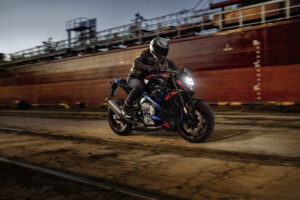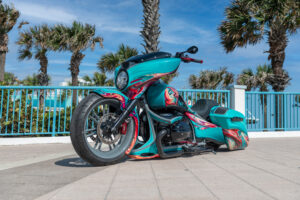One-star or five-star? What determines car safety ratings
Everyone knows that vehicle safety is a vital component of the vehicle manufacturing process and many people have heard of the Euro NCAP five-star safety rating system. However, not many consumers understand what safety ratings are, how they are determined nor how to make use of them when identifying a suitable vehicle to purchase.
Here’s what you need to know…
The frontal tests are performed at 64 km/h into a deformable barrier.
The Euro NCAP five-star safety rating system is designed to help consumers, their families and businesses compare vehicles more easily and to help them identify the safest choice for their needs. It is a voluntary vehicle safety rating system created by the Swedish Road Administration, the Fédération Internationale de l’Automobile and International Consumer Research & Testing, and backed by the European Commission, seven European governments, and motoring and consumer organisations in every EU country. Other areas with similar (but not identical) programmes include Australia and New Zealand with ANCAP, Latin America with Latin NCAP and China with C-NCAP.
The side impact tests are performed at 50 km/h.
They publish safety reports on new cars, and awards ‘star ratings’ based on the performance of the vehicles in a variety of crash tests, including front, side and pole impacts, and impacts with pedestrians. The top overall rating is five stars.
The safety rating is determined from a series of vehicle tests, designed and carried out by Euro NCAP. These tests represent, in a simplified way, important real-life accident scenarios that could result in injured or killed car occupants or other road users. While a safety rating can never fully capture the complexity of the real world, vehicle improvements (including technology developed over the past years), bring about high safety standards to the benefit to motorists all over the world.
The side impact pole test is performed at 32 km/h.
The frontal tests are performed at 64 km/h into a deformable barrier and is designed to represent an impact with a vehicle of similar mass and structure as the car itself. The side impact tests are performed at 50 km/h, and the side impact pole test is performed at 32 km/h. The pedestrian safety tests are performed at 40 km/h.
From 1 January 2009, the system adopted the rear-impact (whiplash) test as part of the new crash-test regimen. This new rating system focused on the overall score on pedestrian protection as Euro NCAP were concerned that car manufacturers were too fixed on occupant safety rather than the safety of those outside the vehicle.
The five-star safety rating system continuously evolves as older technology matures…
THE MORE STARS THE BETTER: The number of stars reflects how well the car performs in Euro NCAP tests, but it is also influenced by what safety equipment the vehicle manufacturer is offering in each market. So a high number of stars shows not only that the test result was good, but also that safety equipment on the tested model is readily available to all consumers in Europe.
The star rating goes beyond the legal requirements and not all new vehicles need to undergo Euro NCAP tests. A car that just meets the minimum legal demands would not be eligible for any stars. This also means that a car which is rated poorly is not necessarily unsafe, but it is not as safe as its competitors that were rated better.
The pedestrian safety tests are performed at 40 km/h.
LOOK OUT FOR THE LATEST RESULTS : The five-star safety rating system continuously evolves as older technology matures and new innovations become available. This means that tests are updated regularly, new tests are added to the system and star levels adjusted. For this reason the year of test is vital for a correct interpretation of the car result.
THE LATEST STAR RATING IS ALWAYS THE MOST RELEVANT: The latest star rating is always the most relevant and comparing results over different years is only valid if the updates to the rating scheme were small. Recently, the inclusion of emerging crash avoidance technology has significantly altered the meaning of the stars.
The following provides some general guidance as to what safety performance the stars refer to in today’s system:
5 STARS: Overall good performance in crash protection. Well equipped with robust crash avoidance technology.
4 STARS: Overall good performance in crash protection; additional crash avoidance technology may be present.
3 STARS: Average to good occupant protection but lacking crash avoidance technology.
2 STARS: Nominal crash protection but lacking crash avoidance technology.
1 STAR: Marginal crash protection.
It is important to note that testing is not mandatory, with vehicle models either being independently chosen by Euro NCAP or sponsored by the manufacturers. That said, it is in the best interest of car manufacturers to have their vehicles tested as car buyers are just as interested in safety as they are about performance.






